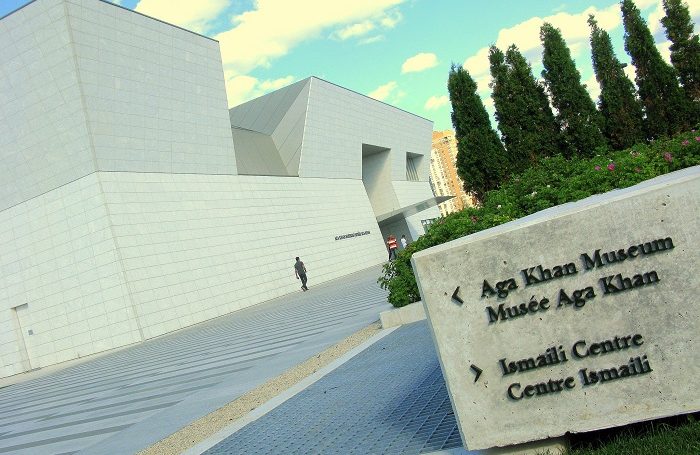
Sadly, what is highly abnormal in the Islamic world often gets mistaken for what is normal. – Prince Shah Karim Al Husseini, Aga Khan IV
A growing number of IR scholars and policy makers now hold that the study of religion adds value to our understanding of world affairs. The opposite benefit may be equally true – that the concepts of IR add value to our understanding of religion. A fine example of this is Jeffrey Haynes’ insightful book Religious Transnational Actors and Soft Power where Joseph Nye’s well-known conception of power is broadly employed to expand our understanding of religious agency. In this post we turn to the concept of middle power used in discourses on foreign policy and apply it to religion.
‘Middle power’ is a phrase applied to states that do not fit descriptors like ‘superpower’, ‘developing country’, ‘rogue nation’ or ‘failed state’. These states are ‘middle’ because they have limited material capacities on a global scale (e.g. military, economic, etc) but exercise high behavioural capacities to effect change. Although there is a wide debate about the meaning of the term, commonly held focus areas for middle power activity are conflict resolution, development assistance and the promotion of democratic pluralism.
Can religions be usefully studied through the lens of ‘middle power’? What would be the benefit in doing so? The discourse on faith actors in IR can at times over-focus on what we might call great power religion – high capacity religious bureaucracies exercising extensive diplomatic muscle – at the expense of faith actors with more limited capacity but very effectively engaged in activities similar to those of middle power states.
One potential example of middle power religion are the Ismailis, an influential international community of approximately 15 million Muslims within the Shia tradition of Islam. The vast majority of Shia belong to the Ithna Ashari tradition (known as Twelver) and exert concentrated power in Central Asia and the Middle East. Iran’s status as a regional superpower, emphasised by the high profile rapprochement with the West in recent days, gives Shia-led politics a central role in what is popularly termed by opponents of Iranian interests as the ‘Shia crescent’.
In contrast to Twelver influence, the Ismailis are a diaspora people with populations concentrated in South Asia, East Africa, Britain and North America. An attack on the Ismaili community in Pakistan last year drew attention to the group that has often shunned exposure due to its minority status.
Despite lacking the large power capacities of the majority Shia interests – no nuclear agreements on the table, no state-centric conflicts with Israel and Saudi Arabia, no contentions over the price of oil – the Ismailis have, under the guidance of their spiritual leader Aga Khan IV Prince Shah Karim Al Husseini, achieved a disproportionate influence in ways that resonate with middle power states.
In a best-selling compendium of speeches titled Where Hope Takes Root, Aga Khan speaks of “the fundamental unity of din and dunia – spirit and life” that forms the basis of an underlying Islamic humanism at the heart of Ismaili practice. The most prominent institutional expression of this is the Aga Khan Development Network (AKDN), one of the world’s largest international non-governmental organisations.
The AKDN focus areas, including health, education, civil society engagement, social peace in a pluralistic environment, and architecture, combine with the Aga Khan’s extensive international diplomacy to exercise what Daryoush Mohammad Poor recently termed Authority Without Territory. It is perhaps no surprise, therefore, that such influences led Canada – perhaps the archetypal ‘middle power’ state – to recognise the Aga Khan as an Honorary Citizen and grant him an address to the joint-sitting of the National Parliament where he described Canada as “a leader in the community of nations”.
A focus on great power politics can consume the study of global affairs creating the illusion that IR is only shaped by alliance making and breaking in a world of conflict. In the same way, a focus on great power religion can at times cause us only to see a clash of interests, as if global faith networks were mere vehicles for difference and religio-self-interest.
The study of middle powers, however contested, reminds us of the multidimensional and regularly cooperative dynamics that can often hold international society together. Likewise, the study of middle power religions, such as the Ismailis, help us contextualise these dynamics within a broader appreciation of the cooperative and constructive role that faith actors play in the constitution of global community. In this, we may be reminded of what is normal rather than exceptional about the political effect of lived religion in the world today.
Further Reading on E-International Relations
- Unmasking ‘Religious’ Conflicts and Religious Radicalisation in the Middle East
- Secularism: A Religion of the 21st Century
- Opinion – Navigating Epistemic Injustices Between Secularism and Religion
- Religion in International Relations and the Russia-Ukraine Conflict
- United Moderate Religion vs. Secular and Religious Extremes?
- Probing the Intersection of Religion, Gender, and Political Violence